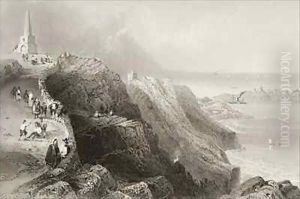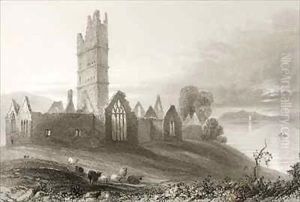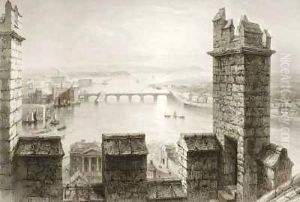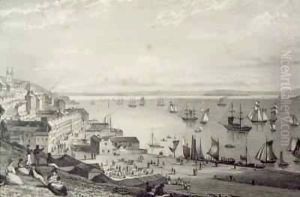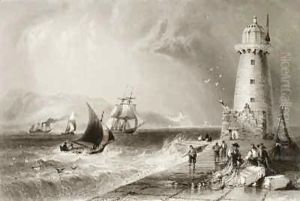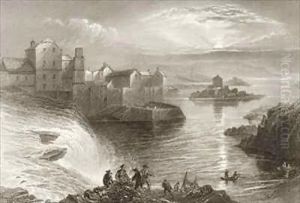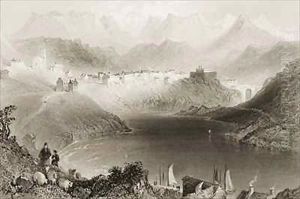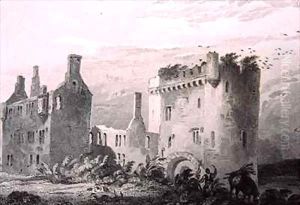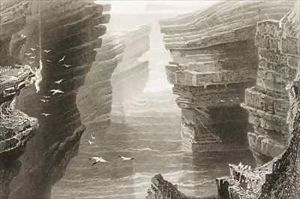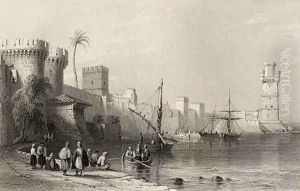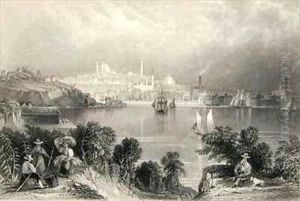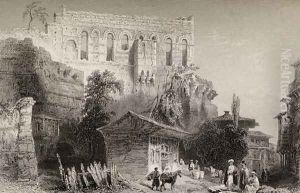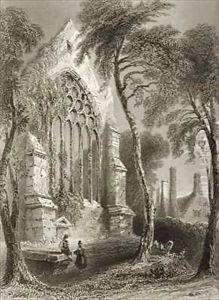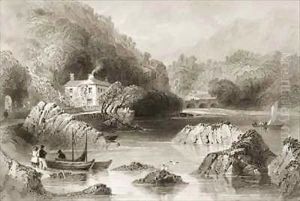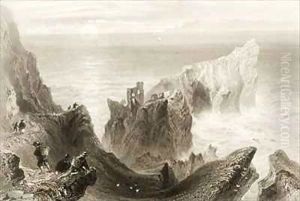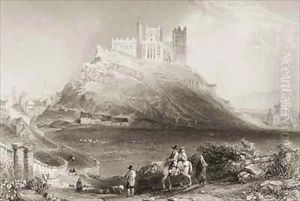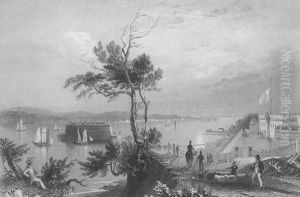William Henry Bartlett Paintings
William Henry Bartlett was a British artist, best known for his detailed steel engravings of landscapes and buildings from around the world. Born in Kentish Town, London, on March 26, 1809, Bartlett was apprenticed to John Britton, an English antiquary and topographer, which greatly influenced his future path as an artist.
Bartlett traveled extensively, visiting the European continent, the Middle East, and North America. His journeys provided him with a wealth of material, and he became particularly noted for his work on the American and Canadian landscape. This was a time when the picturesque was highly valued, and Bartlett's work played a significant role in shaping the European view of North America. His engravings appeared in popular travel books of the time, including Nathaniel Parker Willis' 'American Scenery' (1840) and 'Canadian Scenery' (1842), which were widely circulated and contributed to his fame.
Bartlett's approach combined meticulous detail with a romanticized view, capturing the essence of the landscapes and buildings he depicted. His work not only served as a record of many landscapes that were changing rapidly due to industrialization and urbanization but also inspired many to travel and see these wonders for themselves.
Despite the popularity of his work, Bartlett's life was not without its hardships. He faced the typical challenges of an artist in his era, including financial instability and the need to constantly produce new work to satisfy the public's appetite. His dedication to his craft took a toll on his health, and he continued to travel and work even as his health declined.
William Henry Bartlett died of fever on board a ship off the coast of Malta on September 13, 1854, while returning from his final trip to the Near East. His legacy, however, lived on through his prolific output of engravings, which continued to be published posthumously. Today, Bartlett is remembered as one of the foremost illustrators of the 19th century, whose work continues to be appreciated for its beauty and historical value.


